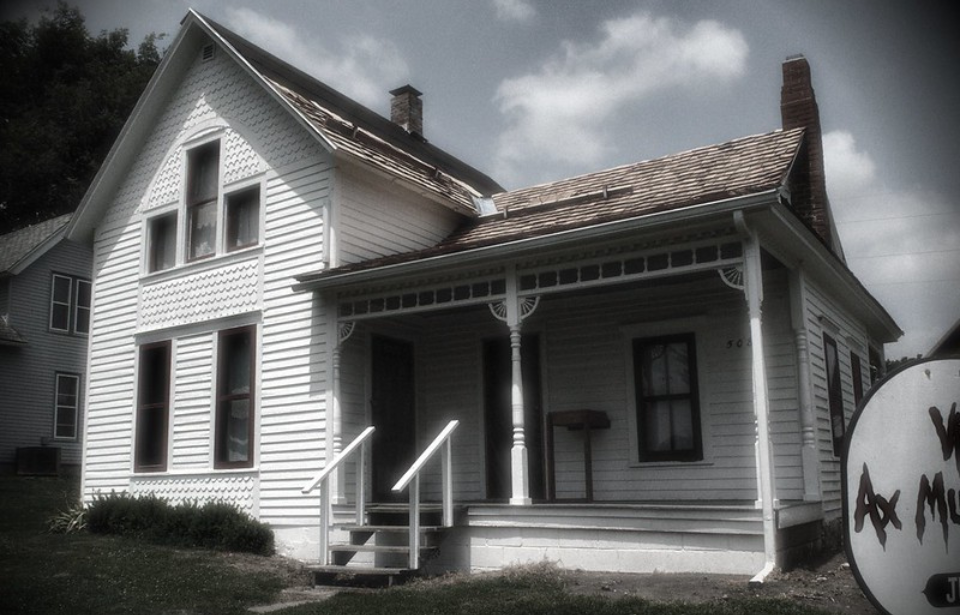One of the most haunting unsolved crimes occurred in Iowa in 1912, yet very few are aware of what happened. On a warm June morning, a neighbor visited the home of the Moore family, only to stumble across something so horrifying that it would remain engrained in their brain forever. In what’s now known as the Villisca Ax Murders, all six members of the Moore family and two guests were found bludgeoned to death. Over 100 years later, the culprit has never been identified.
A gruesome discovery inside the Moore family residence
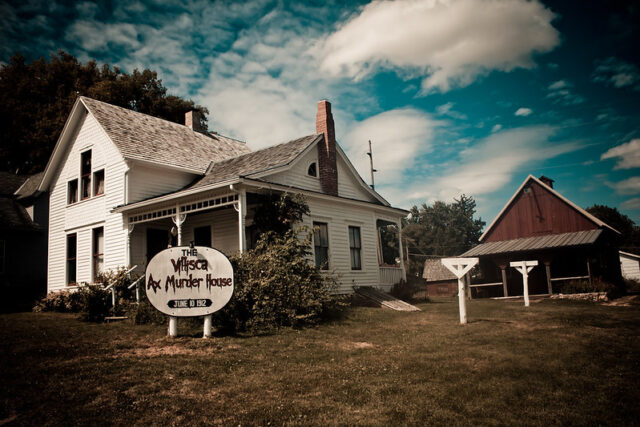
Imagine a peaceful, close-knit community nestled in the heartland of America – that’s exactly what Villisca, Iowa, was in 1912. It was a small town where everyone knew their neighbors and crime was virtually unheard of. At the end of one particular street is an old white house that’s close to multiple churches and a park facing toward a middle school. It resembles any other residential area, yet the truth is, it’s anything but.
On the morning of June 10, 1912, Mary Peckham knocked on the front door of this white house, which belonged to the Moore family – parents Josiah and Sarah, and children Paul, Mary Katherine, Herman and Arthur. Peckham had grown curious as to their whereabouts, as they hadn’t been doing their regular morning chores and found no answer upon arriving at the house.
Peckham called Josiah’s brother, who was able to enter the residence with a key he had in his possession. Almost immediately, he told the neighbor to call Villisca’s peace officer, Henry “Hank” Horton. The reason? All six members of the family, as well as two guests, the Stillinger sisters, were dead, bludgeoned to death with an axe.
Who were the victims of the Villisca Ax Murders?
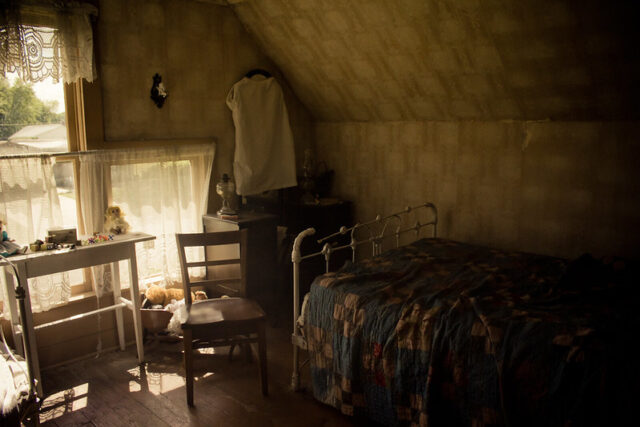
As aforementioned, the victims of the Villisca Ax Murders were the Moore family and the Stillinger sisters, Lena and Ina. The latter two were friends of Mary Katherine and had been invited over for a sleepover. Considered a particularly well-off family, they’d spent the evening at church, before retiring for the night in their residence. To ensure they got a good night’s rest, the two sisters were given the guest bedroom on the main floor.
It’s believed the murderer(s) entered the house via an unlocked door. It wasn’t uncommon for residents to keep their entryways unlocked, given the small and safe nature of Villisca at the time. Everybody knew each other, so why would they need to lock the doors?
While an exact time frame for the murders couldn’t be determined, the local doctor estimated the crime had occurred sometime between midnight and 5:00 AM, due to the state of the bodies. It’s reported that two smoked cigarettes were found in the attic, which points to the possibility that whoever killed the eight individuals had waited patiently before entering the master bedroom and making their way throughout the house.
A long list of suspects in the Villisca Ax Murders
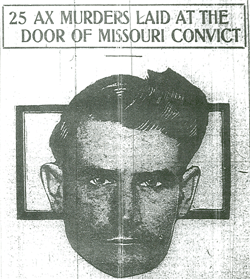
As can be expected, the Villisca Ax Murders threw the entire town into chaos. Law enforcement officials struggled to make sense of the seemingly random crime, and a web of suspicion soon engulfed the community. From transient workers passing through to alleged serial killers, numerous suspects emerged. However, no one was ever convicted for the brutal killings.
The list of suspects in the case is as long as it is intriguing. Some theories point to a local suspect, such as businessman Frank Fernando Jones, who had a rivalry with Josiah Moore, while others believe the murders were the work of a predator stalking small towns or even a transient. Among the suspects raised in this regard were Andrew Sawyer, a drifter obsessed with serial killers, and traveling minister Rev. George Kelly, who was in Villisca at the time.
Unfortunately, investigators were never able to definitively link someone to the murders, and, to this day, the question of who wielded the axe that fateful June night remains unanswered.
A trial only intensified the media circus around the case
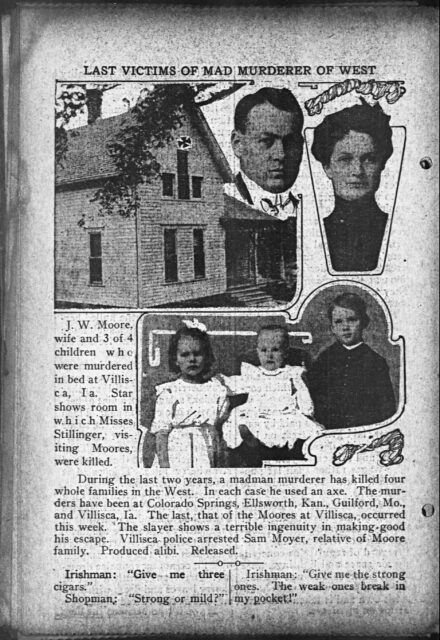
In the months following the Villisca Ax Murders, a number of trials took place, with George Kelly being charged with the crime twice. The first trial ended in a hung jury, while the second acquitted him of any involvement. While that was the case, the court proceedings only intensified the sensationalism around the killings, bringing them to a national audience.
One particular article that was published in The Day Book on June 14, 1912, seemed to link the murders to those of three other families in the region. It featured the headline, “LAST VICTIMS OF MAD MURDERER OF WEST,” and the following sentence, “During the last two years, a madman murderer has killed four whole families in the West.” It added that each crime had been committed with an axe.
Ghost tours and pop culture influence
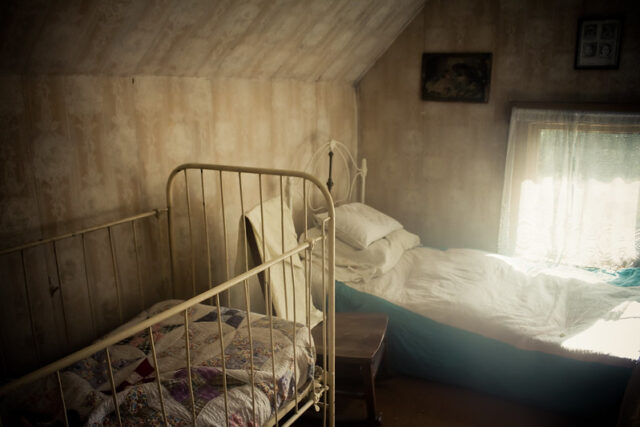
As with many unsolved mysteries, the Villisca Ax Murders have left a lasting legacy. The Iowa town becomes synonymous with tragedy and ghostly encounters, with locals and visitors alike reporting eerie occurrences and strange phenomena. Today, ghost tours and paranormal investigations continue to keep the story alive.
The slayings have also left their mark on popular culture. Books exploring the chilling narrative have been written, and many podcast episodes have been recorded covering the case (most notably My Favorite Murder). On top of this, various online creators and television shows have explored the Moore family home in the hopes of encountering something paranormal.
Could modern tools be used to solve the Villisca Ax Murders?
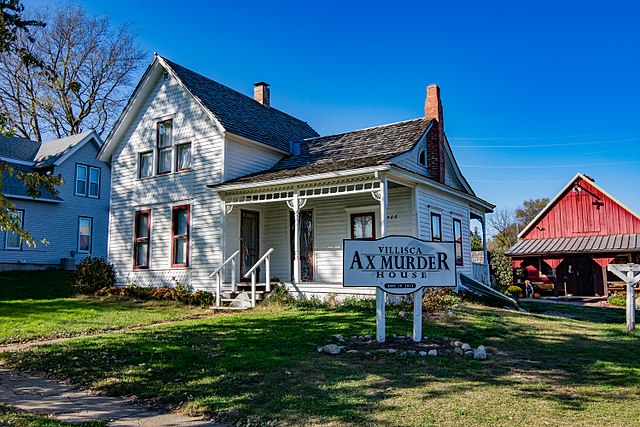
While over a century has passed since the Villisca Ax Murders occurred, the quest for justice continues. Modern investigative techniques and advancements in forensic science have sparked renewed interest in the case, providing hope to many that there may one day be a resolution.
More from us: The Heartbreaking Way JFK’s Children Learned About Their Father’s Death
Until that happens, the killings will continue to stand as a chilling reminder of the depths of human depravity and the enduring power of unsolved mysteries.
